My daughter asked me to make her a mail organizer and key rack combo for the entryway to her apartment. She sent me about 5 ideas from Pinterest, and we decided on the one you see in this tutorial.
This was fun to make, and I completed it in one afternoon. A great way to reuse abandoned pallet wood. Looks rustic and a huge home decor piece.
Hope you enjoy the tutorial!
Recommended Tools & Supplies
Pallet boards or lumber of choice
Miter saw or table saw
Wood screws and glue and screw driver
Drill and orbital sander
Lacquer spray or finish of choice
Hanging hardware (like for picture frames)
The Plans


Step 1 – Select the pallet boards
Of course, you can use any lumber for this project, but I had some pallet boards laying around not being used. Although pallet boards look great and they’re free, you must be super selective on which boards you choose for a project.
I tried to pick boards with few cracks, the least amount of warpage, and close to the same thickness. My boards were around 1/2 inch thick.
Although, I’m giving you all the dimensions for my mail organizer key rack (see plans above), your dimensions may vary some from mine. It all depends on the pallet boards you have on hand. And those come in many dimensions and thicknesses. So don’t be alarmed if your project doesn’t turn out exactly like mine.
If you’re not familiar with pallet boards and how to disassemble them, I have made a YouTube video just for that. Check it out below:
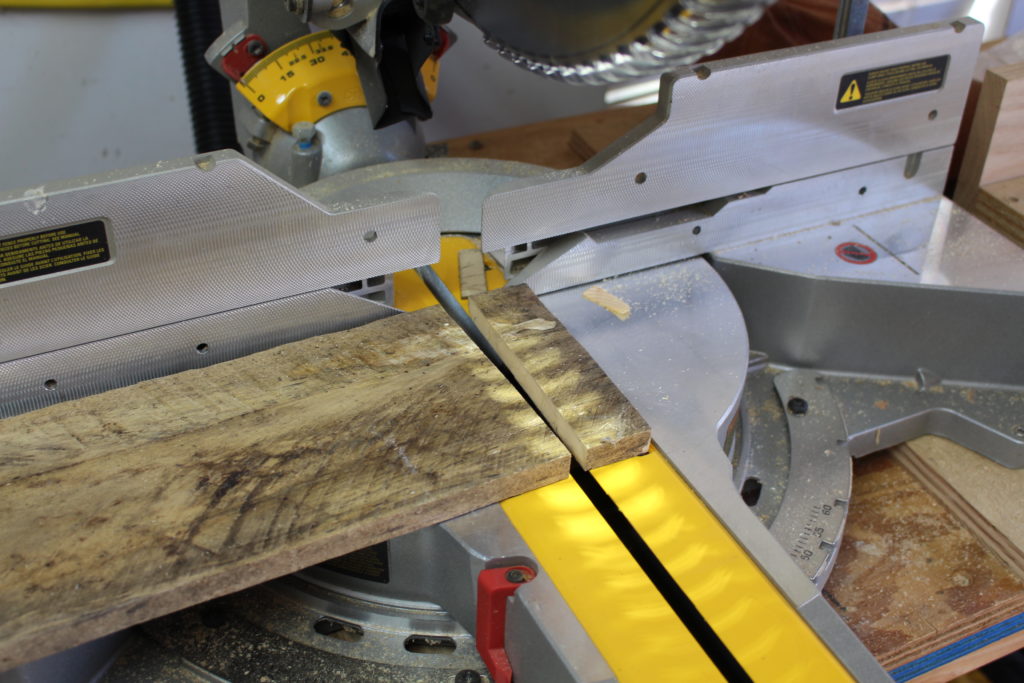

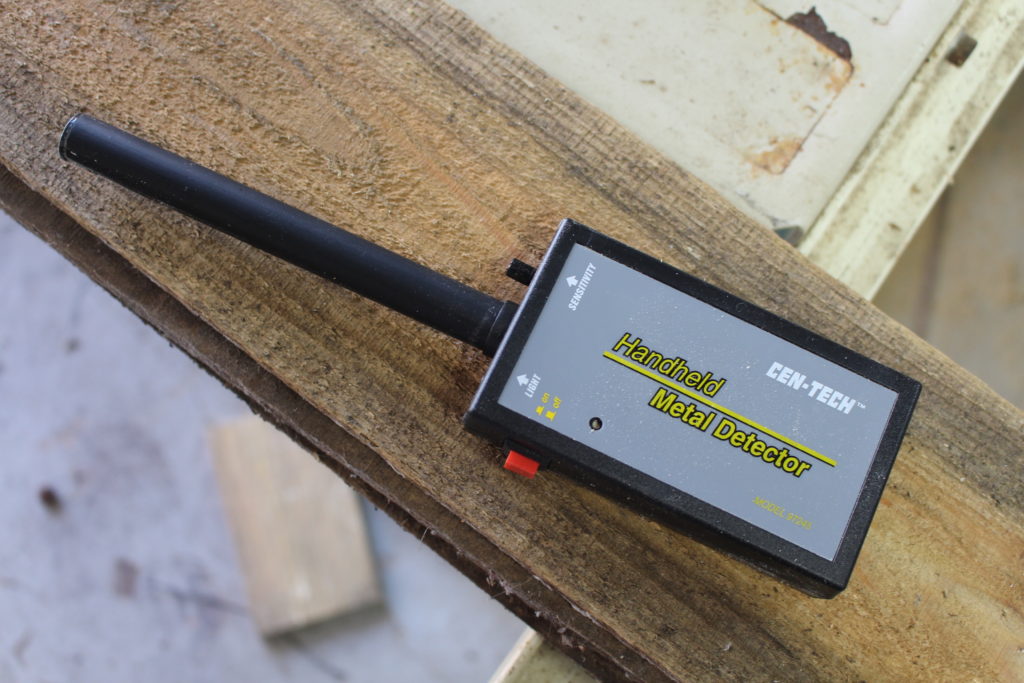
Step 2 – Cut out the boards
Make your measurements and cut out the boards. I used a chop saw for cross cutting, and I used the table saw to true up the edges of the boards.
However, you can use whatever saws you have on hand. And you don’t have to do the true up step if you don’t want to. Remember, this is a rustic project.
PLEASE BE CAUTIOUS when cutting. Look for embedded nails and try to cut into areas that appear to be without leftover nails. I used a metal detector which comes in real handy, but I had to be careful because even the metal detector could miss a nail. If you use a metal detector like this, make sure it’s turned to the most sensitive setting.
I highly recommend drilling pilot holes for your screws because the boards are real fragile. Glue is also a big help. And I think the glue will help cut down on future cracks that may develop.

Step 3 – Do some sanding
I used my orbital sander (with 80 grit sandpaper) and lightly went over the boards. I sanded the boards individually before assembly and then went over the whole project after assembly.
My goal was not to sand the boards smooth, but just get off any dirt or grime left on the boards. If you sand too much, you risk ruining the rustic look. So, be conservative with you sanding. Don’t forget the dust mask.
And since people will be putting their hand on the mail trough, make sure you sand off any rough edges that could potentially cause a splinter.

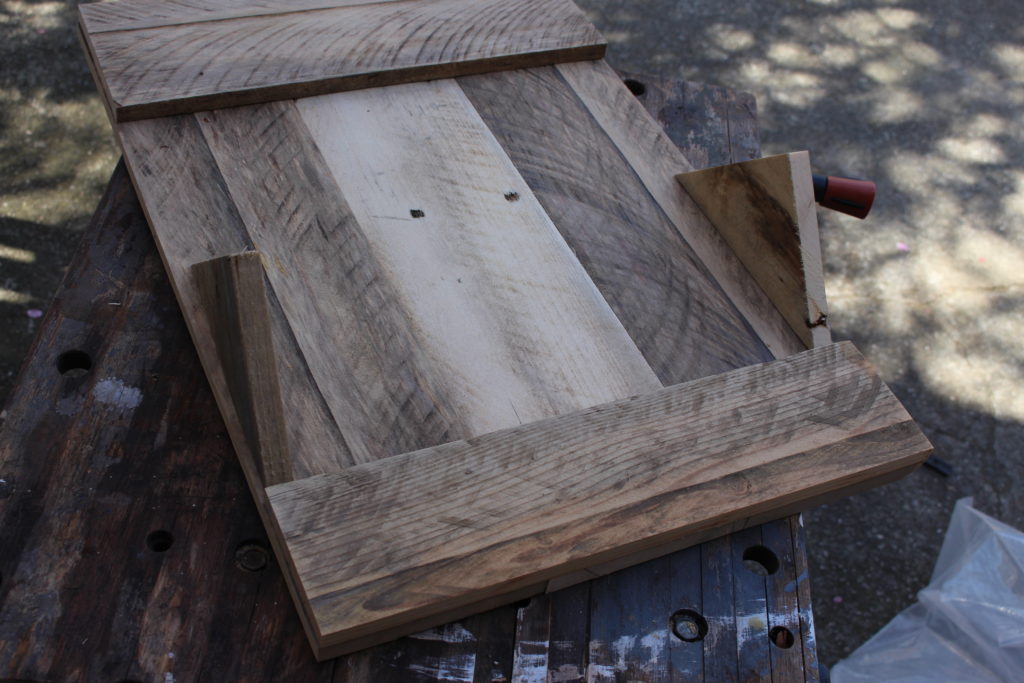
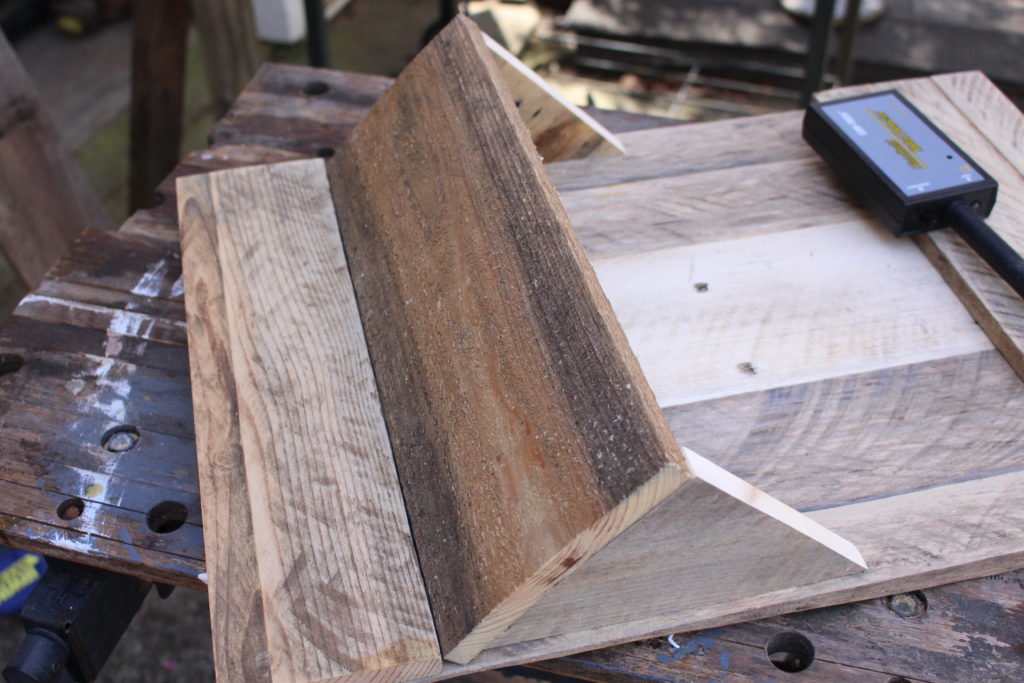


Step 4 – Assemble
I assembled the back board first by attaching two cross members. I screwed those on from the back. Use small wood screws that won’t extend beyond the width of the boards you’re joining. Again, drill some pilot holes to keep the boards from cracking.
After I put the back board together, I assembled the trough for the mail.
Last step was to attach key hangers. I got these from Hobby Lobby for about $2 a piece. Had to drill the hole out some to make the screw fit. I also chose to use black screws to match the hooks.

Step 5 – Finish the project
Next, I sprayed on about 3 to 4 coats of lacquer. The can said to allow a 30 minute dry time between coats. I didn’t do any sanding between coats.
Hang the mail organizer key rack to your wall.
There are many ways to hang this. Preferably you want to anchor your holding hardware into wall studs. But I used some special screws that will hold around 30 pounds just screwed into sheetrock. And I attached some standard hangers on the back of the organizer. You’ll need a level, a screwdriver and an extra hand will help.
I hope you enjoyed this tutorial! Please use the comments section if you have any questions or any feedback for me. I always welcome your feedback on what I can do better. Please share!
If you like this tutorial, don’t forget to SUBSCRIBE to my online woodworking magazine Four Oaks Crafts. Look for the subscribe form below this post.

Are you starting up a new shop? Want to work safer in your shop? To help you answer these questions I've put together a 2-part checklist -- Home Shop Safety & Tool Checklist.
I will also send you updates of my latest woodworking and DIY projects. You can get all this by subscribing to my free email newsletter.

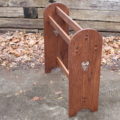





good job
thank you
You’re welcome! Thanks for the comment!